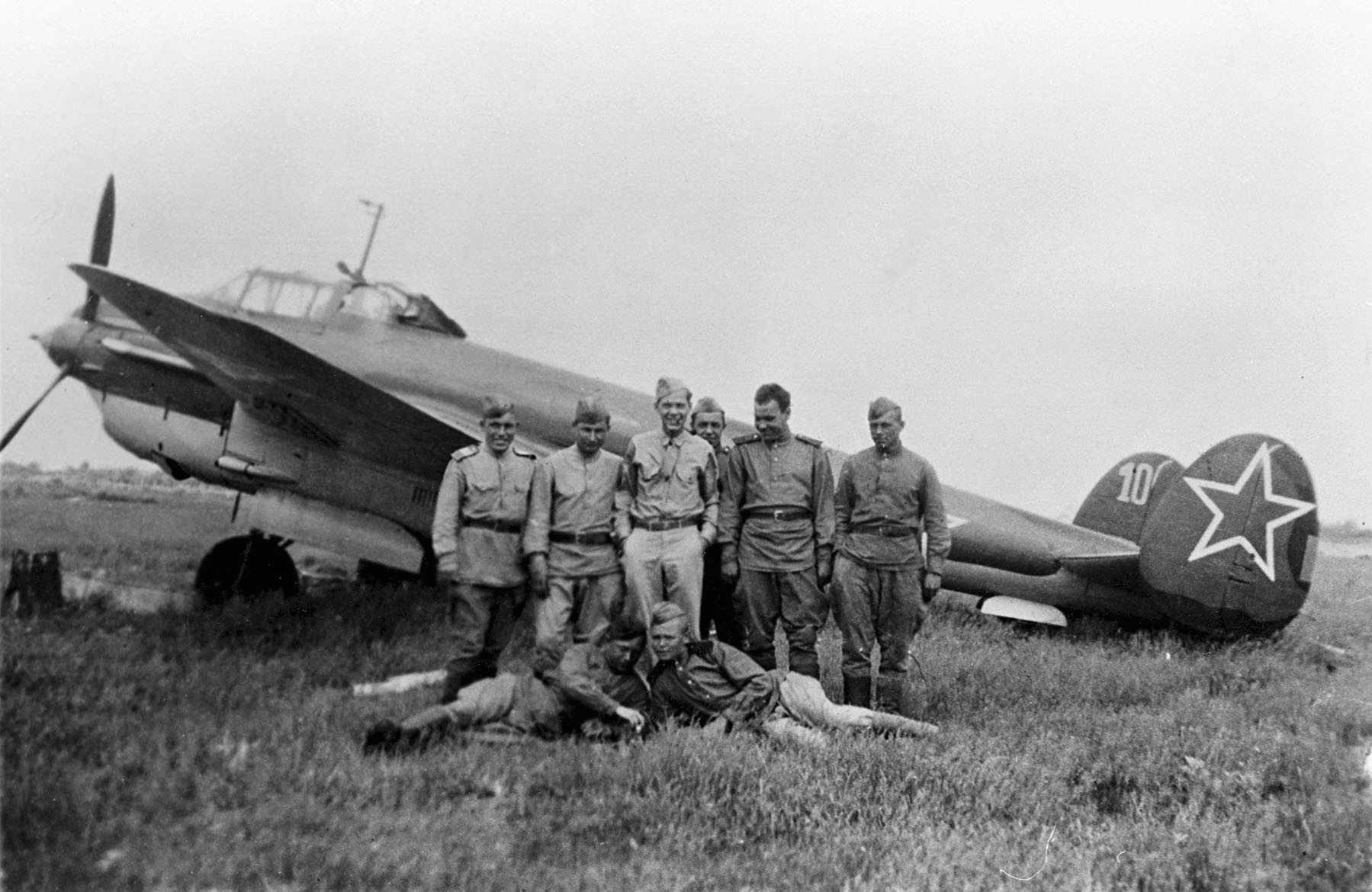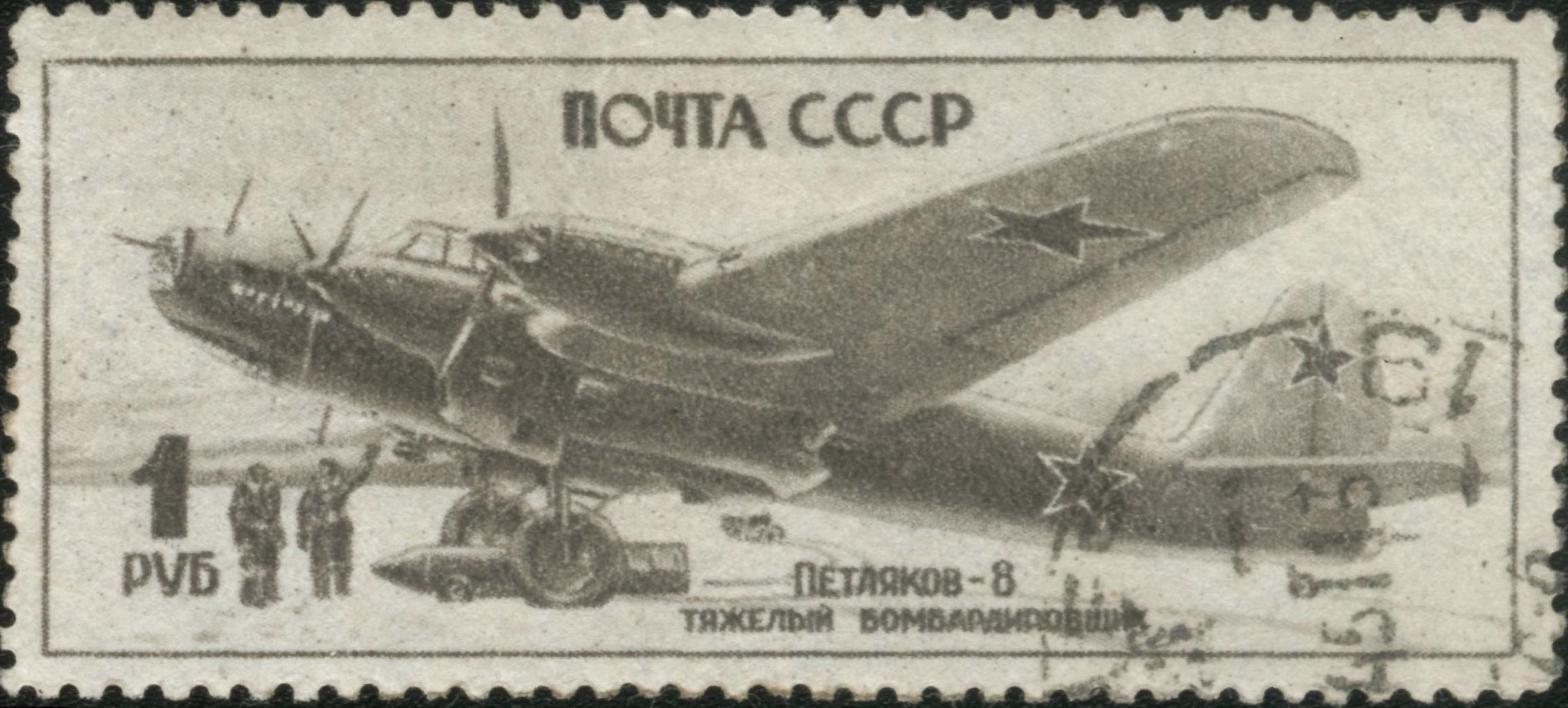|
Petlyakov
V.M. Petlyakov Design Bureau (, ''Opytnoe Konstructorskoe Byuro Petlyakova'') was a Soviet OKB (design bureau) for military aircraft, headed by designer Vladimir Petlyakov. Following his death in 1942, the bureau was controlled by Izakson, Putliov, and Myasishchyev before being dissolved in 1946. Developments * Pe-2 'Buck'/PB-100, 1939. ** VI-100/"100" prototype, "high altitude fighter", 1939. ** Pe-2I fighter ** Pe-3 multirole fighter, 207 were built, 1941. *** Pe-3bis multirole fighter, about 300 were built, 1941. ** Pe-4 Pe-2 with Klimov VK-105PF engines. **Vb-109 (by V.Myasichev) high-altitude bomber. *Pe-8 The Petlyakov Pe-8 (russian: Петляков Пе-8) was a Soviet Union, Soviet heavy bomber designed before World War II, and the only four-engine bomber the USSR built during the war. Produced in limited numbers, it was used to Bombing of Berl .../TB-7 The only four-engined bomber the USSR used during World War II, 1935. References Aircraft manufacturers of the So ... [...More Info...] [...Related Items...] OR: [Wikipedia] [Google] [Baidu] |
Petlyakov Pe-2
The Petlyakov Pe-2 (russian: Петляков Пе-2) was a Soviet twin-engine dive bomber used during World War II. One of the outstanding tactical attack aircraft of the war,Ethell 1996, p. 152. it also proved successful as a heavy fighter, as a night fighter ( Pe-3 variant) and as a reconnaissance aircraft.Angelucci and Matricardi 1978, p. 234. The Pe-2 was, numerically, the most important Soviet bomber of World War II, at their peak comprising 75% of the Soviet twin-engine bomber force.Smith 2003, pp. 155. The Soviets manufactured Pe-2s in greater numbers (11,430 built) during the war than any other twin-engine combat aircraft except for the German Junkers Ju 88 and the British Vickers Wellington.Guston 1980, p. 173. Several communist air forces flew the type after the war, when it became known by the NATO reporting name ''Buck''. Development In 1937, Vladimir Petlyakov was the leader of the Heavy Aircraft Brigade at the Tupolev OKB responsible for the development of the ANT-4 ... [...More Info...] [...Related Items...] OR: [Wikipedia] [Google] [Baidu] |
Vladimir Petlyakov
Vladimir Mikhailovich Petlyakov (russian: Влади́мир Миха́йлович Петляко́в; 15 June 1891 – 12 January 1942) was a Soviet aeronautical engineer and aircraft designer. Petlyakov was born in 1891 in Sambek (Don Host Oblast, Russian Empire) (currently part of Neklinovsky District, Rostov Oblast), where his father served as a local official. After graduating from the Technical College in Taganrog (today the "Taganrog Petlyakov Aviation College", Таганрогский авиационный колледж им. В. М. Петлякова) in 1910. he travelled to Moscow, where he was accepted into the Moscow State Technical University; however, due to financial difficulties he was unable to complete his studies. After the 1917 Russian Revolution he continued his education and was hired to work as a technician in the aerodynamics laboratory at Moscow State Technical University under the guidance of Nikolai Zhukovsky, while resuming his studies. He gai ... [...More Info...] [...Related Items...] OR: [Wikipedia] [Google] [Baidu] |
Petlyakov Pe-3
The Petlyakov Pe-3 was the long-range heavy fighter version of the successful Petlyakov Pe-2 high-speed dive bomber used by the Soviet Union during World War II. Its design and use followed a comparable path to those taken by the German Luftwaffe with the Junkers Ju 88 and the British Royal Air Force with the De Havilland Mosquito. The Soviets realized the need for a night fighter after the first night bombing of Moscow during Operation Barbarossa. The Petlyakov Pe-2 was selected for modification as the most suitable aircraft available. It was initially used for daylight ground attack missions during the Battle of Moscow, but this proved to be costly since the aircraft was unarmored. Armor and additional guns were retrofitted to the existing aircraft to make it more effective, but the evacuation of the sole factory building the Pe-3 in October 1941 limited the number of aircraft available and many units of the Soviet Air Forces flying the Pe-3 were either disbanded or converted ... [...More Info...] [...Related Items...] OR: [Wikipedia] [Google] [Baidu] |
Petlyakov Pe-8
The Petlyakov Pe-8 (russian: Петляков Пе-8) was a Soviet heavy bomber designed before World War II, and the only four-engine bomber the USSR built during the war. Produced in limited numbers, it was used to bomb Berlin in August 1941. It was also used for so-called "morale raids" designed to raise the spirit of the Soviet people by exposing Axis vulnerabilities. Its primary mission, however, was to attack German airfields, rail yards and other rear-area facilities at night, although one was used to fly the People's Commissar of Foreign Affairs (Foreign Minister) Vyacheslav Molotov from Moscow to the United States in 1942. Originally designated the TB-7, the aircraft was renamed the Pe-8 after its primary designer, Vladimir Petlyakov, died in a plane crash in 1942. Supply problems complicated the aircraft's production and the Pe-8s also had engine problems. As Soviet morale boosters, they were also high-value targets for the Luftwaffe's fighter pilots. The loss rate of t ... [...More Info...] [...Related Items...] OR: [Wikipedia] [Google] [Baidu] |
Petlyakov VI-100
The Petlyakov VI-100 (''Visotnyi Istrebitel'' – high altitude fighter) was a fighter/dive bomber aircraft designed and built in the USSR from 1938. Development The VI-100 was first conceived in 1938 by a team led by Vladimir Petlyakov at STO-100, it was an aerodynamically-clean all-metal monoplane with turbo-supercharged engines. Constructed using light alloy stressed skin the VI-100 had electrical servo-motors in the flying controls and automatic adjustment of the gunsight with angle of attack, as well as pressure cabins for pilot and radio-operator/gunner, and an extensive 28V DC electrical system. Originally intended to carry a 3in calibre gun with 24 rounds in a drum, the large calibre gun was replaced by racks under centre-section to carry 100(220 lb),200(440 lb) or 500 kg(1,100 lb) bombs as well as two ShVAK and two ShKAS The ShKAS (Shpitalny-Komaritski Aviatsionny Skorostrelny, Shpitalny-Komaritski rapid fire for aircraft; Russian: ШКАС - Шп ... [...More Info...] [...Related Items...] OR: [Wikipedia] [Google] [Baidu] |
1942 In Aviation
This is a list of aviation-related events from 1942: Events * The United States Coast Guard begins to use the national insignia for United States Army, United States Navy, and United States Marine Corps aircraft on its own aircraft for the first time. The practice has continued ever since. January * The U.S. Joint Chiefs of Staff begin to consider how to create a transportation system in the China-Burma-India Theater, primarily involving transport aircraft. * Lieutenant Ivan Chisov of the Soviet Air Force miraculously survives a fall from 22,000 feet (6,706 meters) without a parachute after departing a heavily damaged Ilyushin Il-4 twin-engined medium bomber. After achieving a terminal velocity of about 150 mph (242 km/h), he is decelerated when he hits the lip of a snow-covered ravine, sliding down with decreasing speed until he stops at the bottom, suffering a broken pelvis and severe spinal injuries. * The Soviet Union parachutes 2,000 troops behind Germ ... [...More Info...] [...Related Items...] OR: [Wikipedia] [Google] [Baidu] |
1946 In Aviation
This is a list of aviation-related events from 1946: Events * The American Section of the International League of Aviators resurrects the National Trophy, a Harmon Trophy awarded from 1926 to 1938 to the outstanding aviator of the year in each of the 21 member countries of the now-defunct League. It will be awarded until 1949 amid much controversy, with the awards going largely unrecognized. * The Electric Boat Company purchases Canadair from the Government of Canada, an important step toward the 1952 founding of General Dynamics Corporation. * The ''Bureau d'Enquêtes et d'Analyses pour la Sécurité de l'Aviation Civile'' (BEA), or Bureau of Investigation and Analysis for Civil Aviation Safety, is formed as the French government agency responsible for investigating aviation accidents and incidents and making safety recommendations based on what is learned from those investigations. * The Nicaraguan airline LANICA begins flight operations. January * Aeropostal Alas de Venezue ... [...More Info...] [...Related Items...] OR: [Wikipedia] [Google] [Baidu] |
Aircraft Manufacturers Of The Soviet Union
An aircraft is a vehicle that is able to fly by gaining support from the air. It counters the force of gravity by using either static lift or by using the dynamic lift of an airfoil, or in a few cases the downward thrust from jet engines. Common examples of aircraft include airplanes, helicopters, airships (including blimps), gliders, paramotors, and hot air balloons. The human activity that surrounds aircraft is called ''aviation''. The science of aviation, including designing and building aircraft, is called ''aeronautics.'' Crewed aircraft are flown by an onboard pilot, but unmanned aerial vehicles may be remotely controlled or self-controlled by onboard computers. Aircraft may be classified by different criteria, such as lift type, aircraft propulsion, usage and others. History Flying model craft and stories of manned flight go back many centuries; however, the first manned ascent — and safe descent — in modern times took place by larger hot-air ball ... [...More Info...] [...Related Items...] OR: [Wikipedia] [Google] [Baidu] |

